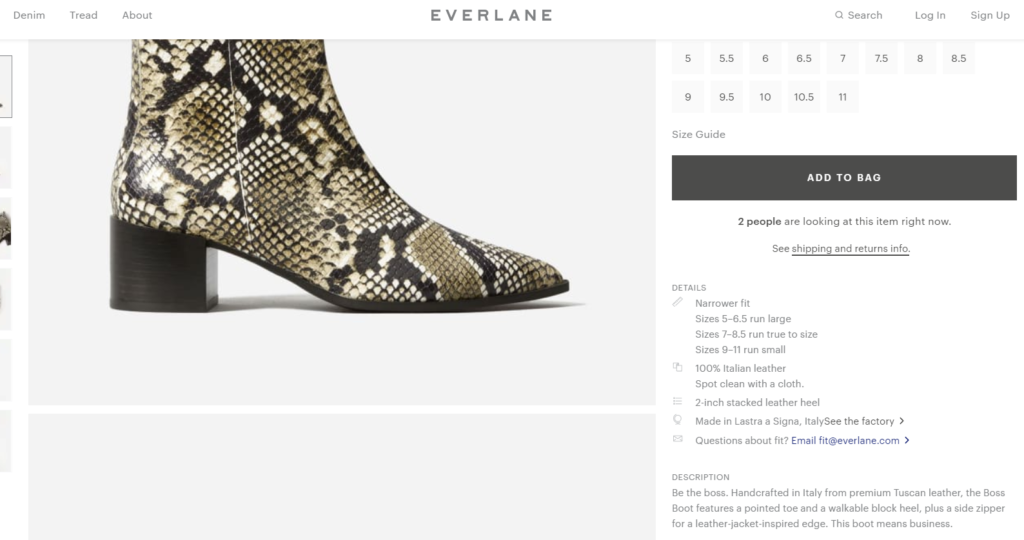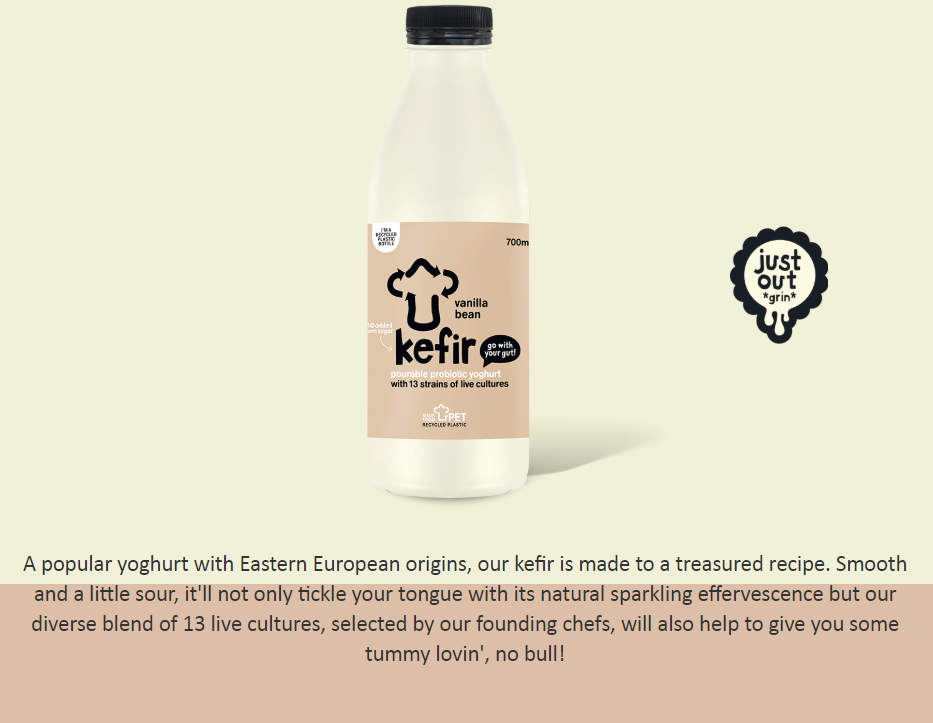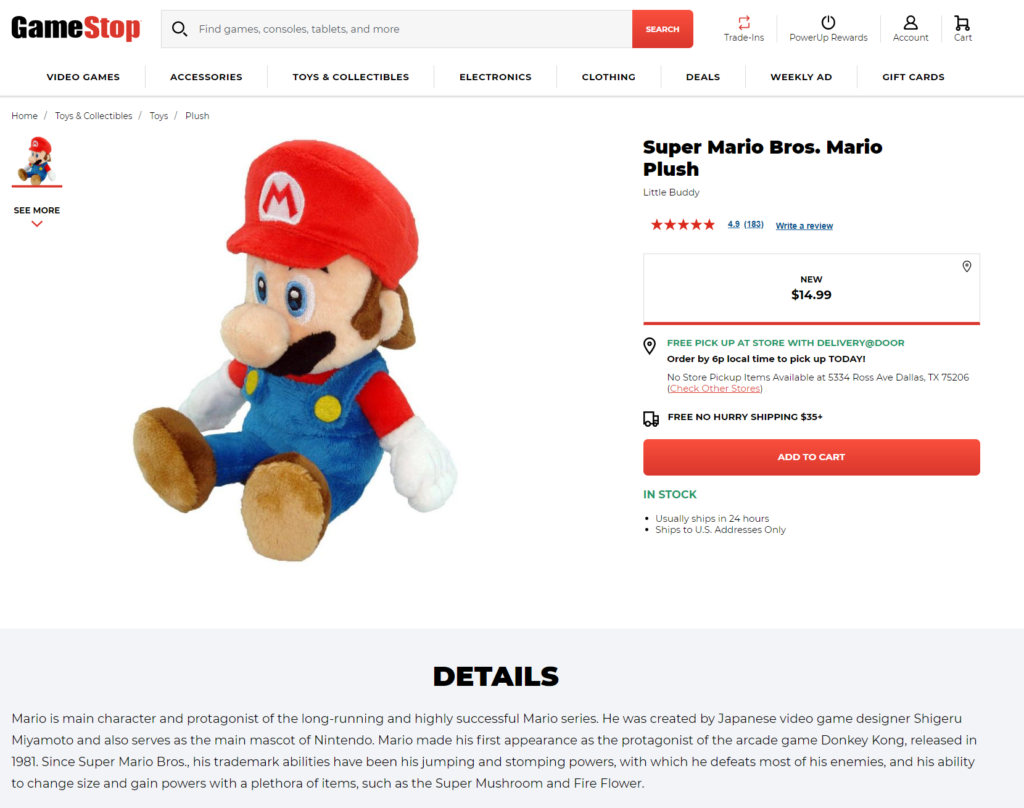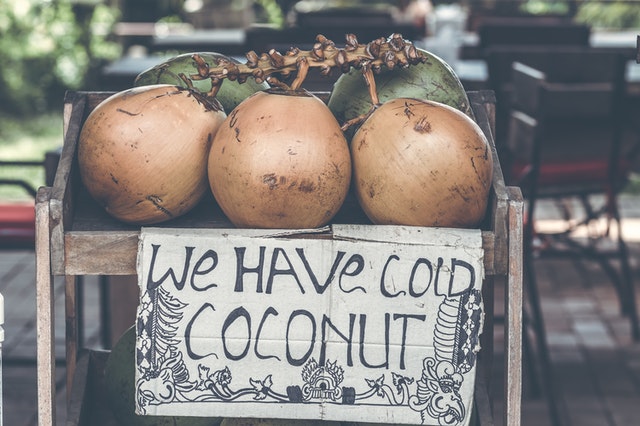If you don’t have a product description, you could be losing 98% of your business. Close to 100% of shoppers have been dissuaded from making a purchase due to missing or incorrect content. That’s massive.
Asking ‘how do I write product descriptions’ is one of the most common questions I see in the writing groups I’m in. And it’s super important to get right because product descriptions perform a range of functions.
- They help with on-page SEO (lots of great opportunities for keywords)
- Can increase conversion rates by up to 20%
- Less emails/ phone calls from customers as they have all the information they need to make a purchase
- Fewer returns. 50% of shoppers have returned an item as it didn’t match the description
My first job in content writing was creating product descriptions for an online luxury clothing store, and I quickly learned all the tricks and skills. I’ve saved you six months of work, and given you the answers here.
Keep your target customer in mind
You’ll have an ideal customer, or ‘avatar’. Write directly for them. It might be a female, 20-30 year old. Or maybe a boomer male. Whoever it is, develop a voice for them and write to them. This will change the kind of words you use, the level of formality, and how much slang you incorporate. Humour works for some customers too.

Everlane has their target market sorted. Walkable heels! Handcrafted in Italy! This boot means business! TAKE MY MONEY ALREADY.
Sell the hole, not the drill
You’re not selling a product. You’re selling the reason someone wants it for. A designer handbag? Because she’s conscious of her appearance and wealth. A drill? Because they need to drill holes to build things. Your product is solving a problem for them.
So rather than a drill being x watts and with 36 drill bits (these specs should be listed in the product details anyway), the drill is ‘powerful enough to tackle the big projects, but versatile enough for the small projects, like hanging a painting in gib. With 36 drill bits, there’s a size for every job and a solution for every problem’.
That designer handbag? No one really cares about the lifetime warranty and that the strap swaps out for another one (lets be honest, we only ever use one strap anyway). It’s that ‘this Louis Vuitton patterned handbag is instantly recognised as a sign of style and class. With impeccable tailoring and luxury materials, this bag is a timeless classic. Louis Vuitton is the epitome of elegance and it will imbue any outfit with a luxe look’.
Amazing, fantastic adjectives, the best in the world
Your description is about making the product sound amazing. So it’s not a pink handbag, it’s a soft, delicate pink. It’s not just a drill, it’s a sturdy, powerful drill. Other experts have developed lists of these ‘power words’, but I think it’s just descriptive words that are used appropriately, sparingly, and correctly.
A great example of adjective use is with menus. Great, descriptive meal dishes mean that people order more dishes. A study showed that descriptive food titles meant a 27% increase in sales over ordinary names. Imagine what that could do to your bottom line.
Think about how something feels. Is the satin smooth on your skin? Is the paint colour bright and crisp? Is the chocolate velvety and lush?

The Collective have great branding. Not only do they have a distinctive tone of voice, but they use those descriptive words, (tickle your tongue, smooth and sour) and there’s also a bit of history, as well as those health benefits- selling the drill!
But, don’t fall back into trite phrases
‘The best chocolate cake recipe’ or ‘excellent quality materials’ are examples of this. You read them, roll your eyes, and think ‘yeah, that’s what everyone says’.
Instead, choose specifics. The chocolate cake is rich and moist. Or the leather is Italian, and the shoes are hand-stitched by artisan shoe-makers in Milan. Don’t fall back into those broad phrases that you see everywhere, they are meaningless.
Also, avoid saying ‘the best’ or ‘the most advanced’ unless you can back that up with data and evidence. The best cake? Why? How? Better than what? It’s meaningless.
Tell a story
Writing 14 million (well, not quite, but it felt like it) descriptions for luxury products, I quickly realised that stories are really engaging. Because I’m not selling you anything- I’m weaving an interesting story (that persuades you to buy, not that you realise it).
- Who makes this product?
- What inspired them to create it?
- What challenges did you face when creating it?

This GameStop description talks about the history of Mario, and why he’s important. He’s a collectable, and they make him seem like it. Who wouldn’t want to own a plush piece of gaming history?
I would write things like ‘Louis Vuitton was founded in Paris in 1854. The founder, Louis Vuitton, wanted to create highly functional but beautiful luggage, starting with a stackable trunk. His popularity soared and quickly he expanded the range. This bag, the Alma, was launched in 1934. It’s named after ‘Place de L’Alma’, a gorgeous tree-lined square in Paris where the Seine River meets Avenue Montaigne. You’ll see the Alma on the arms of modern celebrities, but Audrey Hepburn and Jacqueline Kennedy were also fans’.
Which segues neatly into my next point.
Social proof
Hearing about which celebrities use a certain handbag means something. If you felt like Jacqueline Kennedy and Audrey Hepburn were style icons (they were), then this is social proof. This, means something.
You can add reviews under your product, or show images of where it’s been in the media. Think about how you can prove that people in your target market love your product?
Do your research
Even if you know your product inside and out, the end user knows more about it than you. And it’s often in wildly surprising ways.
I was writing product descriptions for a client selling gummi bear moulds. I went onto Amazon and looked at what customers were saying. And it wasn’t what I expected. Apparently, these moulds were great to make food that kids would eat. Even fussy kids loved eating a gummy bear. Also, a primary concern in the Q&A was about dishwasher proof and how easy the bears were to pop out. So that became a description that said things like ‘perfect size for toddler hands to grasp while they enjoy your healthy fruit snack’ and I made sure I mentioned they were dishwasher safe. Also, that briefly immersing the bottom half in hot water meant the gummi bears popped out easily, even if they were a sticky or clingy food.
That simple changed in description resulted in a 40% jump in sales.
Check out what your competitors are saying about the product (but don’t copy them, that’s bad karma). Check out Amazon reviews and questions. What does the manufacturer say? You can even use your customers words—think about just verbatim stealing their adjectives.
Don’t have everything in blocks of text
It’s hard to read, a big solid block of words. Break it up with a list, headlines or different text to break up the paragraphs.
And always use white space.
The product description writing checklist
- Write to your ideal customer
- Sell the hole, not the drill
- Solve your customer’s problem
- Have some amazing descriptives
- Don’t write vague, generic promises
- Find out what your customers really want to know about your product and answer those questions
- Break things up with bullet point lists or headings
- Do your research
- Find out some way of including social proof
- Tell a story
Great product descriptions will pay you back. It’s worth spending time to get them right, or paying a professional description writer to do so. That increase in sales make it well worth every cent you spend- the benefits can be tremendous.
